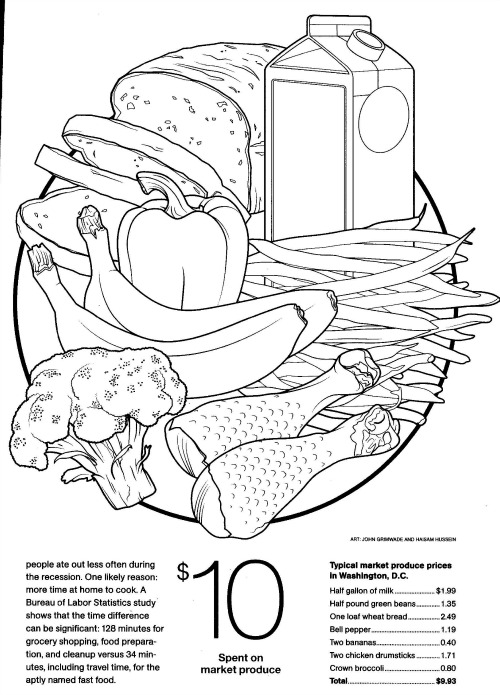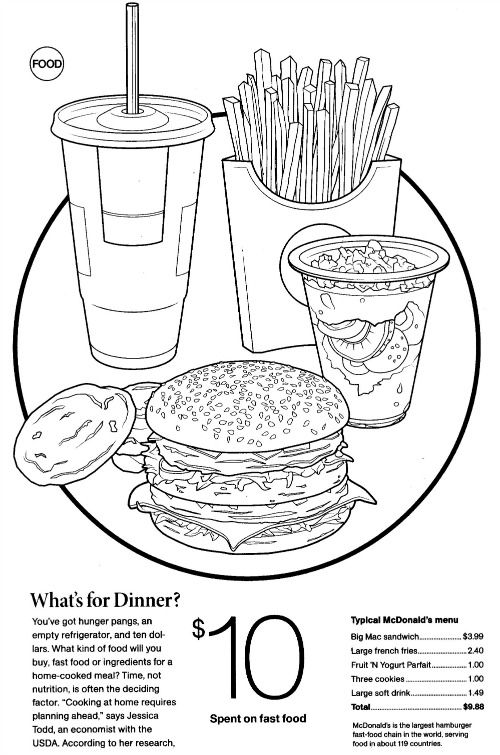Healthy Food on $4 a Day
I am in such a great place right now. My blog is blooming, and the past year, since I started to treat it professionally, it has really taken off. I’m thankful.
Truthfully, there were days, not long ago, when I first was starting my PR business, and I had just become a single parent, where money was very, very tight. My son and I were living on $1200 a month, and more than half of that went to our rent. There was also internet, transportation, and business expenses. It was a very tight time.

Thankfully, those days are past. The work I put in is paying off, and we are now living a lot more comfortably.
But as beautiful as our city is, it’s also expensive, and not everyone is as fortunate.
You would think, living as we do, in a city where food is plentiful, that people are not going to bed hungry. But sadly, that’s not true. There are people with disabilities, mental illness or drug addiction whose ability to purchase food is very challenged. There are people who work minimum-wage jobs, whose food budgets are also incredibly slim.
I recently read an article in National Geographic that stunned me. The article, The New Face of Hunger by Tracie McMillan, talks about the concept of food deserts. These are people who live in urban centres, but have no access to healthy food. They live too far from a market to walk, and they don’t own a car. They may be able to take public transportation, but carrying groceries on the bus is an obvious challenge. What is nearby, and within easy walking distance, is fast-food restaurants. So they often choose to spend their budget on cheap and filling fast food, rather than healthy alternatives.
 Part of the reason also boils down to time and planning:
Part of the reason also boils down to time and planning:
Time, not nutrition, is often the deciding factor. “Cooking at home requires planning ahead,” says Jessica Todd, an economist with the USDA. According to her research, people ate out less often during the recession. One likely reason: more time at home to cook. A Bureau of Labor Statistics study shows that the time difference can be significant: 128 minutes for grocery shopping, food preparation, and cleanup versus 34 minutes, including travel time, for the aptly named fast food. –National Geographic
In the US, if you are on food stamps, your budget is $4 per day per person. Not much. One of the soloutions being tested is doubling the amount you receive for your food stamps, if you buy local produce, like from a farmer’s market.
In Canada, we are not exempt, as you can see, if you read this recent article from The Globe and Mail.
Here in BC, your budget for food is $21-26 a week, if you are collecting Income Assistance.
So, what are some ways we make sure that healthy food is available to everyone?
Raising awareness, and putting pressure on the government to come up with better solutions. One such organization that’s dedicated to this task is Raise the Rates. They have spearheaded something called The Welfare Challenge, where they encourage people to live on welfare rates for one week. Bif Naked is a celebrity who recently took that challenge, and you can read the account of my friend Sam, who took it last year, here.
Community Gardens: if we can grow our own food, then food becomes free, and we know its fresh and heathy because we grew it! I do feel that there are probably many more people who are looking for community gardens than there are spaces available, sadly. Click here for more information.
Make food more accessible to lower-income people: Quest, for example, gets food that grocery stores have slated to go to the landfill, and sells it at a discount to people in need. God’s Little Acre is a farm in Surrey that grows produce, and, through the help of volunteers, makes it available to people with low incomes. In Toronto, a new mobile food market is bringing fresh produce to food deserts.
Education: Leeann Brown has written a fabulous cookbook called Good and Cheap, that helps people to eat healthy food on $4 a day. You can download the cookbook for free here. Also, check out these 7 Food Blogs that focus on how to eat on a budget. Here are 12 ways to save on groceries and shop on a budget, and 10 tips for healthier grocery shopping.
